L12: Syntax
1/21
There's no tags or description
Looks like no tags are added yet.
Name | Mastery | Learn | Test | Matching | Spaced |
|---|
No study sessions yet.
22 Terms
What are the rules that govern sentence form?
Moving from fixed forms (e.g. ‘apple’) to derivational forms:
play → play, played, playing
I, you, admire → “I admire you”
Morphology and syntax
• In all languages, the formation of words and sentences follows highly regular patterns
• How are the regulations and exceptions represented?
The study and analysis of language production in children reveals common and persistent patterns
What is the Wug Test (Berko, 1958)
Experiment for Morphology

How was children’s performance on the Wug Test
showed young children have a natural abstract morphology thinking
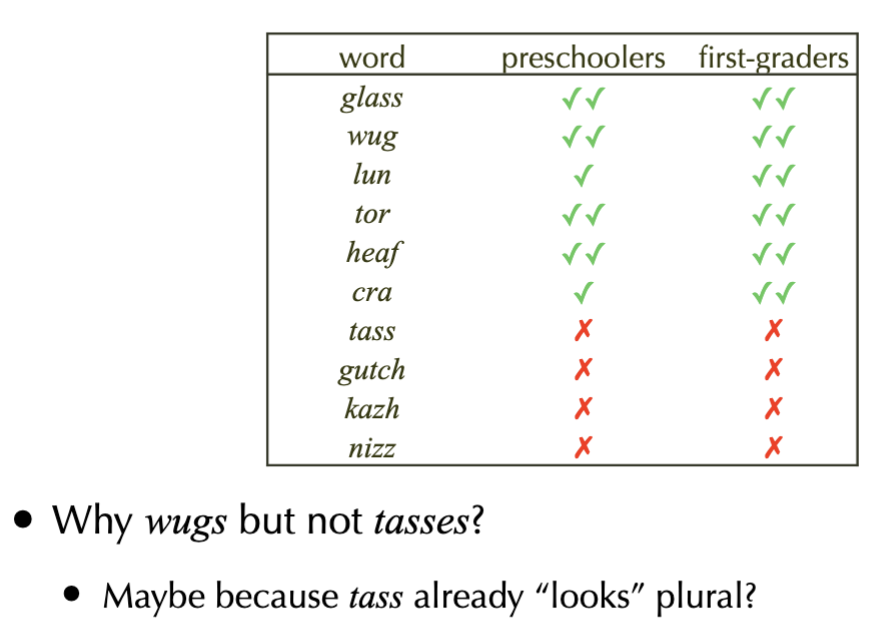
Describe the two aspects of the case study: Learning English Past Tense
The problem of English past tense formation:
Regular formation: stem + ‘ed’
Irregulars do show some patterns
No-change: hit → hit
Vowel-change: ring → rang, sing → sang
Over-regularizations are common: goed
These errors often occur after the child has already produced the correct irregular form: went
Describe the learning curve of children learning morphology and the 4 aspects
Observed U-shaped learning curve:
Imitation: an early phase of conservative language use
Generalization: general regularities are applied to new forms
Overgeneralization: occasional misapplication of general patterns
Recovery: over time, overgeneralization errors cease to happen
Lack of Negative Evidence
Children do not receive reliable corrective feedback from
A Symbolic Account of English Past Tense - Model
Describe 2 Predictions of the Dual-Route Account model
Prediction:
Errors result from transition from rote learning to rule-governed
Recovery occurs after sufficient exposure to irregulars
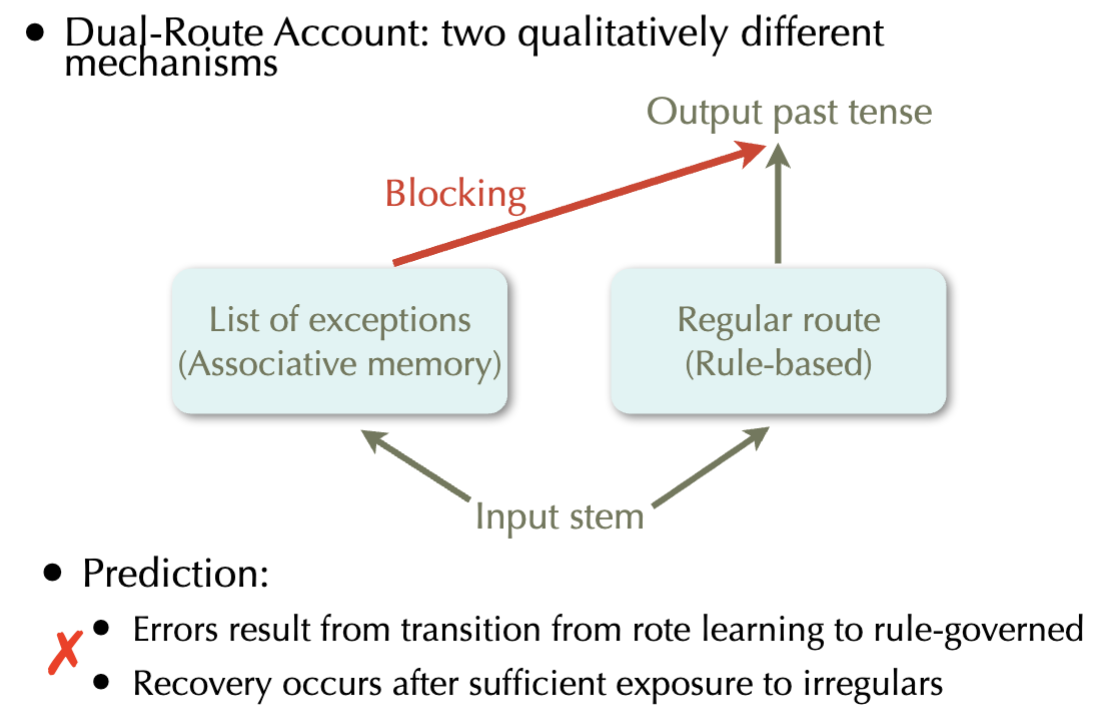
A Connectionist Account of Learning English Past - Model
Describe 2 properties of the connectionist model
Properties:
Early in training, the model shows tendency to overgeneralize; by the end of training, it exhibits near perfect performance
U-shaped performance is achieved using a single learning mechanism, but depends on sudden change in the training size
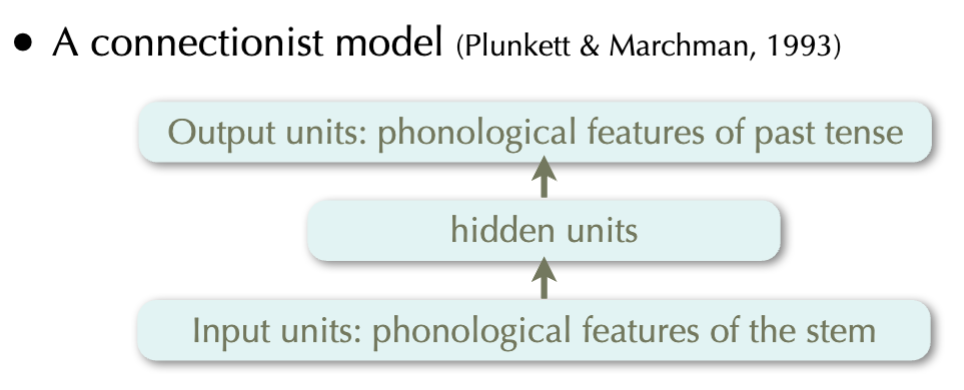
Describe the innateness of Language - Syntax
Central claim: humans have innate knowledge of language
Assumption: all languages have a common structural basis
Argument from the Poverty of the Stimulus (Chomsky 1965)
Linguistic experience of children is not sufficiently rich for learning the grammar of the language, hence they must have some innate specification of grammar
Assumption: knowing a language involves knowing a grammar
Universal Grammar (UG)
A set of rules which organize language in the human brain
What are 3 principles and parameters of universal grammar?
A finite set of fundamental principles that are common to all languages
E.g., “a sentence must have a subject”
A finite set of parameters that determine syntactic variability amongst languages
E.g., a binary parameter that determines whether the subject of a sentence must be overtly pronounced
Learning involves identifying the correct grammar
I.e., setting UG parameters to proper values for the current language
Describe the general approach of computational implementation of the principles and parameters of universal grammar
Formal parameter setting models for a small set of grammars
Clark 1992, Gibson & Wexler 1994, Niyogi & Berwick 1996, Briscoe 2000
General approach:
Analyze current input string and set the parameters accordingly
Set a parameter when receiving evidence from an example which exhibits that parameter (trigger)
Representative models:
Triggering Learning Algorithm or TLA

Describe the 3 represenative models for computational implementation of the principles and parameters of universal grammarrepresentative
TLA: randomly modifies a parameter value if it cannot parse the input
STL: learns sub-trees (treelets) as parameter values
VL: assigns a weight to each parameter, and rewards or penalizes these weights depending on parsing success


Describe the 3 representative models for computational implementation of the principles and parameters of universal grammar BUT with an ambiguous trigger
TLA: chooses one of the possible interpretations of the ambiguous trigger
STL: ignores ambiguous triggers and waits for unambiguous ones
VL: each interpretation is parsed and the parameter weights
What are the Computational Challenges of the principles and parameters of universal grammar (4)
Practical limitations:
Formalizing a UG that covers existing languages is a challenge
Learning relies on well-formed sentences as input
P&P framework predicts a huge space of possible grammars
20 binary parameters lead to > 1 million grammars
Search spaces for a grammar contain local maxima
I.e. learner may converge to an incorrect grammar
Most of the P&P models are psychologically implausible
They predict that a child may repeatedly revisit the same
Describe Usage-based Accounts of Language Acquisition
Main claims:
Children learn language regularities from input alone, without guidance from innate principles
Mechanisms of language learning are not domain-specific
Verb Island Hypothesis (Tomasello, 1992)
Children build their linguistic knowledge around individual items rather than adjusting general grammar rules they already possess
Children use cognitive processes to gradually categorize the syntactic structure of their item-based constructions
Distributional Representation of Grammar
Knowing a language is not equated with knowing a grammar
Knowledge of language is developed to perform communicative tasks of comprehension and production
Neural networks for language representation and acquisition
Different levels of linguistic representation are emergent structures that a network develops in the course of learning
Case study: Elman (1990)

Case study: Elman (1990)
*The model learns to categorize words into appropriate classes, and expect the correct order between them in a sentence
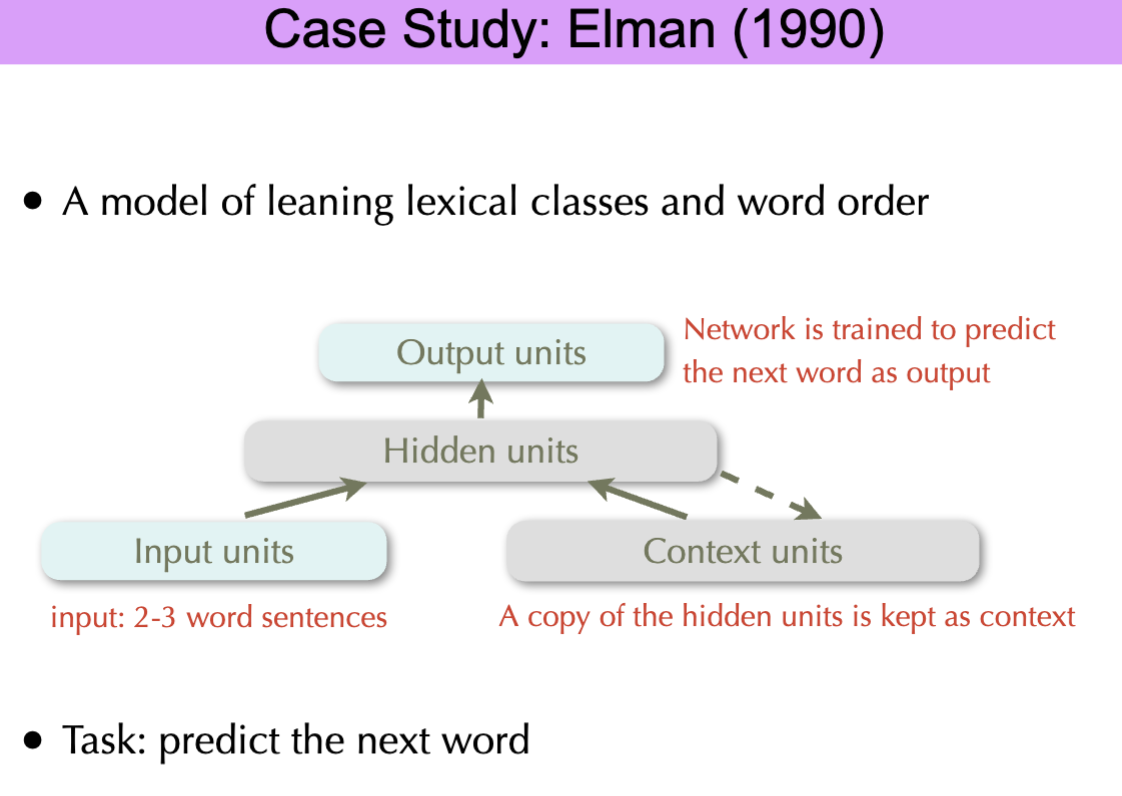
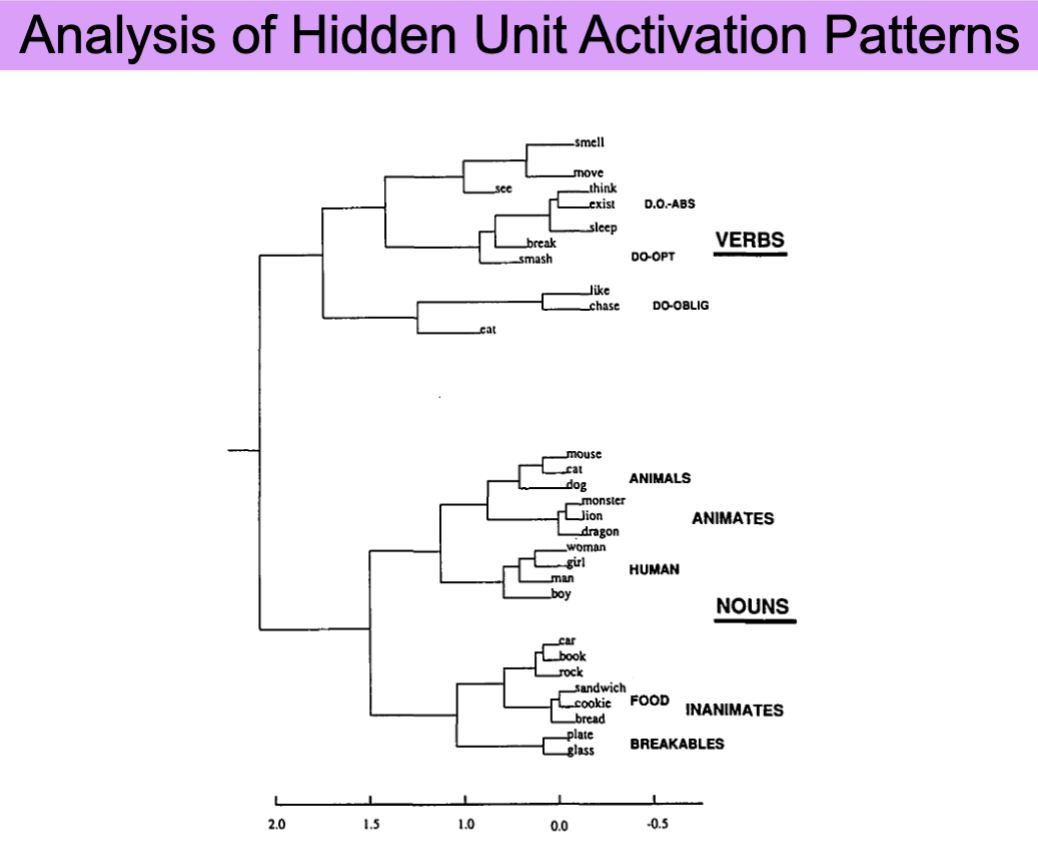
Describe the Case Study: MOSAIC
MOSAIC (Model Of Syntax Acquisition In Children
Learns from raw text, and produces utterances similar to what children produce using a discrimination network
Underlying mechanisms
Learning: expand the network based on input data
production: traverse the network and output contents of the nodes
Generalization
Similarity links allow limited generalization abilities
Lack of semantic knowledge prevents meaningful generalization
Generalized sentences are limited to high-frequency terms
Evaluation
The model was trained on a subset of CHILDES
It was used to simulate verb island phenomenon, optional infinitive in English, subject omission
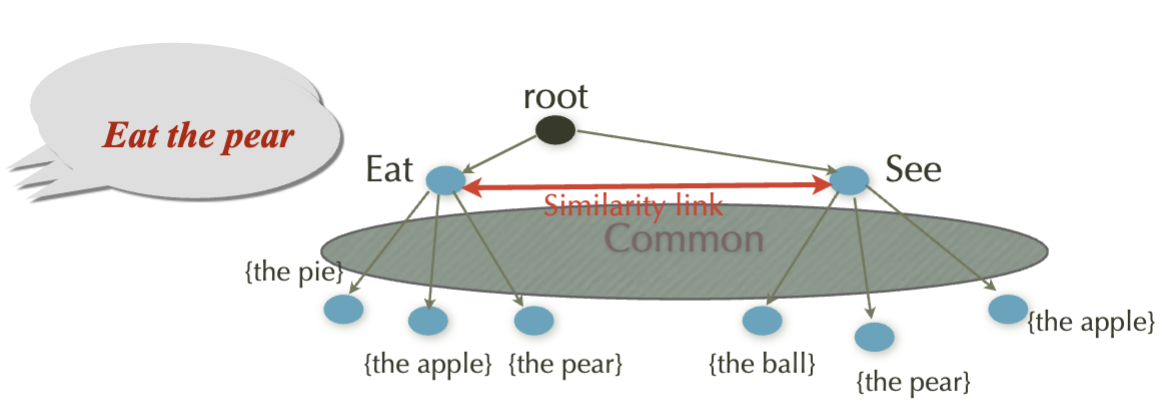

Describe 2 examples for Treating LLM’s as Human Subjects
Systematically manipulate aspects of input and monitor model output

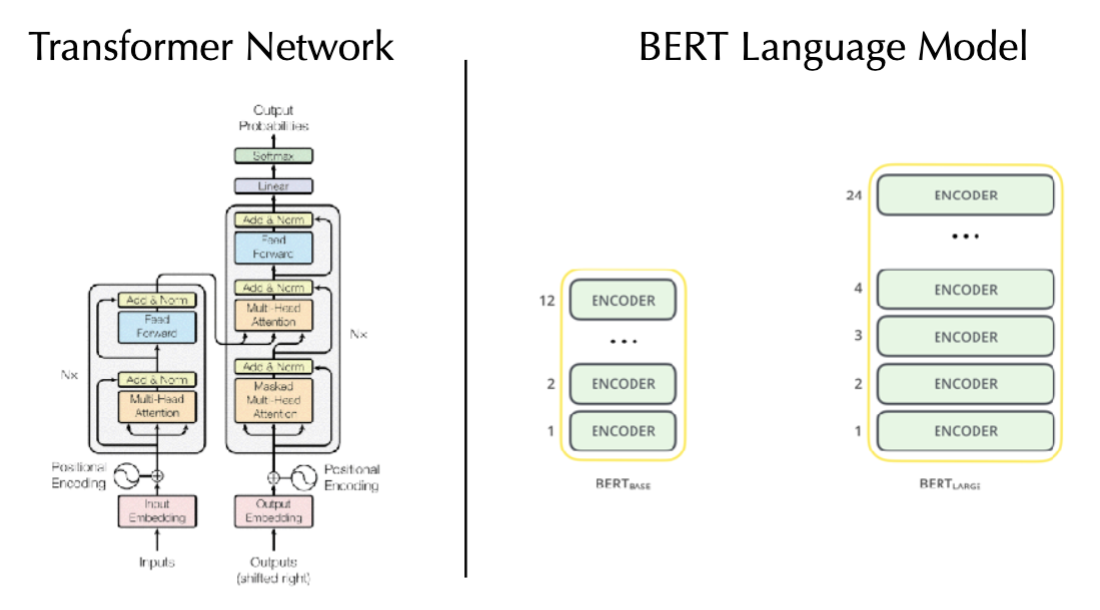
Describe the process of Treating LLM’s as Human Subjects
Use a small-scale, controlled test set
... often borrowed from a published psycholinguistic study
Subject an LLM to these tests
Make conclusions about
the nature of linguistic knowledge learned by the LLM
the processing mechanisms employed by the LLM
Compare their performance to that of human subjects
Open questions
How various aspects of language acquisition interact with each other?
Various learning procedures are most probably interleaved (e.g.,word leaning and syntax acquisition)
Most of the existing models of language acquisition focus on one aspect, and simplify the problem
How to evaluate the models on realistic data?
Large collections of child-directed utterances/speech are available, but no such collection of semantic input
A wide-spread evaluation approach is lacking in the community